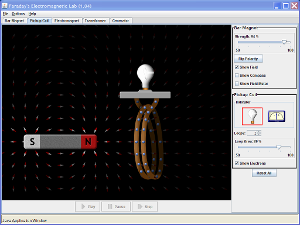I will be merging TGEM and Information Visualization for this post to discuss magnets and misconceptions that come with this topic. Many students think that all magnets are attracted to each other but this activity will help to correct this misconception. TGEM fosters learners’ conceptual understanding to generate rules or relationships, evaluate them in light of new conditions, and modify their original rules or relationships.
Step #1: Ask students what will happen when two magnets are brought closer together. Students will write their hypothesis down.
Step #2: Teacher is going to give two magnets to each student and students will observe what happens when they are brought closer to each other. Students will try different sides of the magnet and see if their hypothesis is still correct.
Step #3: Students will modify their original hypothesis. For example, if students thought that all sides of magnets were attracted to another magnet, they will discover the different poles of the magnet and will be able to modify the relationship.
Step #4: Once students have done this, students will be able to play an interactive simulation on PhET. The simulation is called ‘Faraday’s Electromagnetic Lab.’ Students will be able to understand why all parts of a magnet are not the same and will also learn why they won’t necessarily attract to each other. Furthermore, students will have an authentic learning experience to enhance their learning to understand why their initial hypothesis did not work and will gain their new knowledge in a way that clears up any misconceptions and preconceived notions.
Step #5: Students will be able to apply what they have learned in a learning environment that is conducive to their learning. Students can bring in magnets and see which magnets are attracted to one another and which ones are not.

Hi Sabrina!
Great idea! I like how you were able to combine TGEM and Visualisation. You have students creating their own hypothesis and then working with materials and recording observations. I wonder though, if your Step 5 could become Step 2. It was my understanding that TGEM has students working with materials and tools to create multiple hypotheses. Therefore, I wonder if it would be more beneficial to have students work with a pile of magnets and alter their hypothesis multiple times before being provided with the two magnets. What do you think? Do you think students could use more exploration before being guided by the educator?
Hi Shayla,
Great point. Step 5 can definitely become step 2. I think that more exploration can be provided in this now that I look back and reflect. That way students are able to ask more questions and inquiry into the concept and topic.
Hi Sabrina
I remember as a kid taking things apart and finding motors, magnets and other electronics that I had no idea what they did. Today, I am taking apart an old treadmill with my own kids. I also, remember taking things apart and putting them back together — many times I had extra parts left over 🙂 If it was not for school, students today would not able to explore. I like the fact that you were also able to connect TGEN and Visualisation.
I wonder if this lesson could be expanded to include how to magnetize and demagnetize different items.
Christopher
Hi Christopher,
I too liked taking things apart and finding ways to put them together again- the exploration of seeing what fits where is something that has always intrigued me. Do your kids find it just as fascinating as you did?